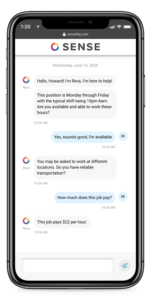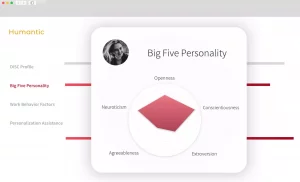
How many times a day do you wonder, “Is there an easier way to do this?” when it comes to your hiring process? Well, the answer to that question is “yes,” and the solution is automation.
Recruiting automation saves time, cuts costs, and moves candidates through the pipeline faster and more efficiently. It frees up recruiters from mundane tasks so they can focus on connecting with the best available candidates.
Ready to automate but not sure where to start? Below are several simple ways to incorporate automation into your hiring process.
1. Engage with your current talent pool
You might have some contacts who’ve shown interest in open positions but didn’t apply. They might have browsed through the job site without taking any next steps. Others may have applied to past vacancies unsuccessfully, but because they’re not checking your job site regularly, they don’t know when new opportunities are available.
With automation, you can identify these potential candidates and bring them back when there’s an opening that’s right for them. Automation tools like Herefish help you match your potential and existing applicants to open roles, so you’re only reaching out to the most qualified candidates on your radar. And you won’t be bombarding your contacts with notifications every time you post a new job — they’ll only see the ones that fit their qualifications and interests.
2. Add chatbots to your job site
AI-powered recruiting chatbots function almost like virtual recruiting assistants. Instead of entering a long, tedious email chain with a recruiter, candidates can engage with chatbots to get immediate answers to frequently asked questions.
Recruiting chatbots, such as the ones from Staffing Engine and Sense, can pre-screen candidates, clear up any confusion about an application, and even help schedule interviews — all without taking breaks. So candidates can complete the application process right away. No more waiting for recruiters to message them back!

Chatbots like the solution from Sense can guide candidates through the application process. (Source)
3. Give your interview process a makeover
Finding an interview time that works for both candidates and recruiters often results in a cumbersome email exchange. But, thankfully, you can say goodbye to this headache because there are plenty of automated solutions offering a remedy.
Many recruiting technologies offer calendar tools that help automate schedule synching. As the only option that integrates with Bullhorn, Staffing Referrals’ calendar tool allows recruiters to send interview invitations straight from their ATS. Once they finish their application, candidates can easily set up interviews, cancel, and reschedule without emailing the recruiter.
But what if you can’t find a time that works for both sides? You can use automation to collect and manage one-way video interview responses to various screening questions. This approach allows recruiters to get more candidates through the interview process in less time. You can also further streamline the process by using AI-powered tools to evaluate video responses.
4. Weed out unqualified applicants with resume screening
More than 40% of the resumes hiring managers receive come from applicants who don’t have the required skills. And 78% of job seekers apply for positions for which they don’t qualify. That means recruiters spend a lot of time sifting through resumes to find candidates with the right skills and experience.
Resume screening tools automate this process by learning the job requirements, then identifying the candidates who are actually qualified for the role.
5. Quickly create a shortlist with skills assessments
Automated skills assessments allow recruiters to identify top candidates through objective evaluations of their performance in different areas — ranging from preferred work styles to mastery of job-specific skills and knowledge.
You can access a wide marketplace of pre-made skills assessments or work with a client to create a standardized project. If you want to speed up this process even more, you can use AI to predict candidates’ personalities and job suitability without a formal assessment.

AI-powered solutions like Humantic automatically analyze candidate personality traits to help recruiters predict if the job is a good fit for them. (Source)
6. Improve candidate communication
Whether you’ve screened out candidates or plan to move them forward, ongoing communication is key. More than half of candidates don’t receive notifications when they’ve been disqualified, and 61% report zero response two months after they’ve applied. A long wait without updates makes candidates reluctant to apply through your agency again.
Fortunately, this issue is one of the easier ones to fix through automation. Automating responses to applications lets candidates know their resume is in your recruiters’ hands, so they won’t be left in the dark wondering if they should submit it again. But you don’t have to stop there — you can create auto-responders and templates for every step in your hiring process to keep candidates informed, whether or not they get the job.
Even people in your talent pool who haven’t yet applied would benefit from regular communication — and not just when there’s a new job opening. Automated messages can periodically offer engaging, useful content they can apply to their job search. This communication helps keep interested candidates connected as well as identifies those who’ve become inactive.
7. Widen your talent pool with referral requests
You might already know that referrals are one of the best sources of highly qualified candidates. But your recruiters have their hands full — it will be tough for them to successfully manage a referral program on top of that.
Fortunately, you can fill up your talent pool with exceptional candidates by investing in referral automation software designed for staffing agencies. This allows your contacts to send applicants your way and see their referral status without checking in with a recruiter. And recruiters can add pre-qualified resumes to their database without posting on more job boards or sending more screening tests.
Work smarter — not harder — to hire top talent
Creating an automated recruiting system is as simple as taking a look at your recruiting pipeline and identifying which phases take the longest or involve the most tedious, repetitive tasks. Have your recruiters been complaining about sending application confirmations? Does it take a week to settle on an interview time? Automate it, automate it, automate it.
While we think we’ve provided a pretty good list for you to start automating your hiring process, we’re sure you’ve got some great ideas of your own. Tweet @StaffReferrals or find us on LinkedIn to let us know how you’ve streamlined your recruiting process to find top talent for your clients.